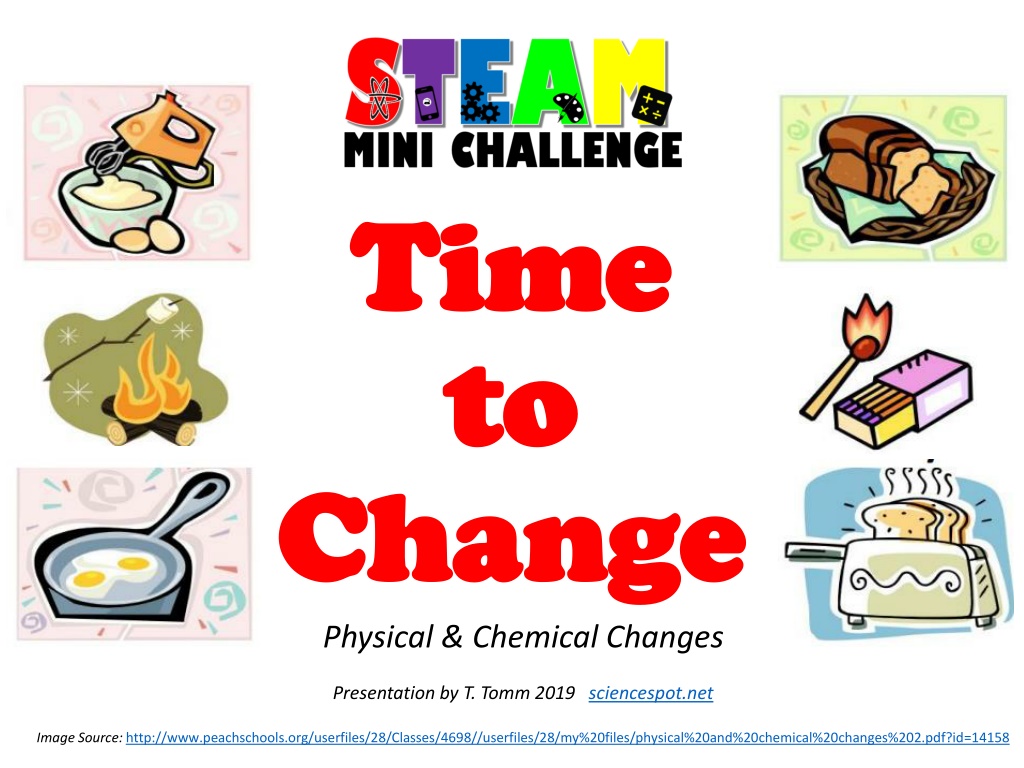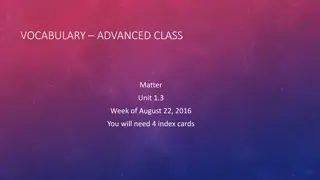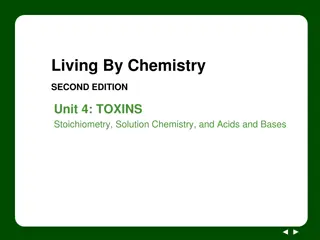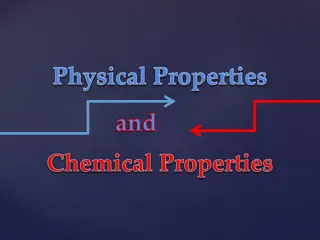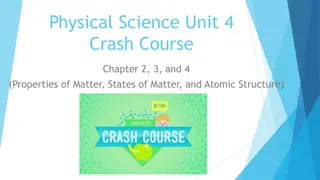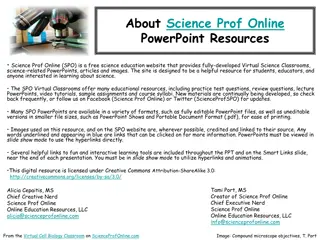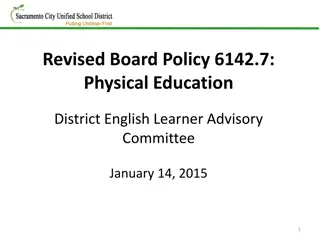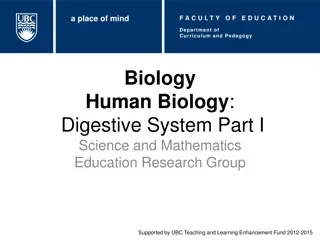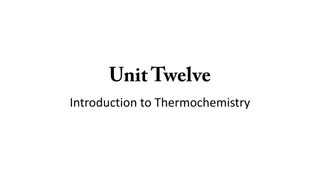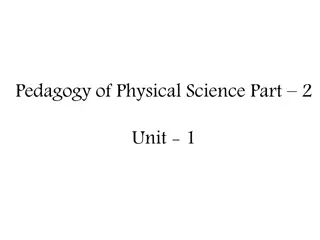Exploring Physical and Chemical Changes in Science Education
Understand the differences between physical and chemical changes, identify examples of each, learn about signs of a chemical change, and explore rocket reactions in this engaging educational presentation on science concepts. Safety rules for experiments are also emphasized.
Download Presentation

Please find below an Image/Link to download the presentation.
The content on the website is provided AS IS for your information and personal use only. It may not be sold, licensed, or shared on other websites without obtaining consent from the author. Download presentation by click this link. If you encounter any issues during the download, it is possible that the publisher has removed the file from their server.
E N D
Presentation Transcript
Time Time to to Change Change Physical & Chemical Changes Presentation by T. Tomm 2019 sciencespot.net Image Source: http://www.peachschools.org/userfiles/28/Classes/4698//userfiles/28/my%20files/physical%20and%20chemical%20changes%202.pdf?id=14158
Part A: Physical or Chemical? 1. What is the difference between physical and chemical changes? A physical change is a change in size, shape, or state, but it is still the same substance. A chemical change creates a new substance with different properties. 2. Lists examples for physical and chemical changes shown in the video. PHYSICAL Cutting or sewing cloth Water changing states (S, L, G) Dissolving sugar in water Mixing ingredients for cookies CHEMICAL Baking cookies Burning wood Metal rusting Fireworks exploding Apple turning brown Digesting food
3. True or False? Physical changes can always be reversed to turn the substances back into their original state. 4. What are signs of a chemical change? A new substance is formed May absorb or release heat May change color, produce an odor, create sound, release gas, or produce light Usually cannot be undone
5. Circle all the examples you think are chemical changes. A. Smashing a piggy bank How many did you circle? Watch the video to check your answers. B. Fireworks C. Mentos in Diet Coke D. Cutting your hair E. Sodium with water F. Ice melting into water G. Cabbage juice mixed with substances H. Sugar dissolving in coffee I. Hammering metal to flatten it
Part B: Rocket Reactions It s time for Rocket Science 8th Grade Science
Part B: Rocket Reactions 1. Identify each change below as either physical or chemical. P P P C ____ Breaking a tablet into smaller pieces ____ Ripping the package to get the tablet out Alka Seltzer Reactions ____ The tablet dissolving in water ____ The citric acid in the tablet reacting with bicarbonate to produce CO2 gas. 2. What variables would be involved in an Alka Seltzer reaction? List them. Tablet size Amount of water in film canister Temperature of water Shaking vs. not shaking Crushed vs. large pieces
SAFETY RULES You must wear SAFETY GOGGLES and may want an APRON! You need to stay out of the way of loaded canisters. Set them down carefully and move out of the way. Make sure it is not located under any lights. Pay attention and listen to your teacher s instructions. You will want to dry off the canister and make sure there is not any residue inside where the cap pops in place. Make sure you record the data in the chart. Everything must be cleaned up at the end of class.
Directions 1 Get a FILM CANISTER from your teacher and set it on a PAPER TOWEL in a PLASTIC TUB on the TABLE. 2 Fill the canister with a 25 mL of water. 3 Get a tablet from your teacher in the correct size. 4 When your teacher says GO, work with a partner to drop in the tablet and quickly put on the lid. 5 - Set it down in the tub and move away. Wait for the reaction! 6 RECORD your results on your worksheet.
Experiment A: Tablet Size - Complete the experiment following your teacher s directions. Record your data and observations in the table as you complete the experiment. Experiment B: Amount of Water - Complete the experiment following your teacher s directions. Record your data and observations in the table as you complete the experiment.
Experiment C: Rocket Challenge Which combination of tablet size and the amount of water will result in the best reaction (the lid traveling the furthest)? Make a prediction: Which amount of water will result in the best reaction ? I think _______ of water and ________ of a tablet will result in the canister traveling the furthest distance, because: ____________________________ ____________________________________________________________ Results: Complete the experiment following your teacher s directions. Record your data and observations in the chart below.
Conclusion 1) What combinations resulted in the highest rating? Describe the experiment in your own words by explaining what happened during the experiment in scientific terms. 2) Was your prediction correct? Why or why not? Going Further: How would these variables affect the reaction? Take a guess and them develop an experiment to test your hypothesis. Water temperature cold vs. hot Surface area whole vs. crushed
Part C: Your Turn Groups of 3 Explore the schoolyard to find examples of physical and chemical changes. Use your smart phone, tablet, or other device to take pictures and/or record videos of the changes. Create a slide show or video with at least 3 examples for each type of change along with explanations either written or included as narration. The slide show must include at least 6 slides one for each example. The video should be between 1-2 minutes in length. Share the finished project with your teacher when you are finished.
